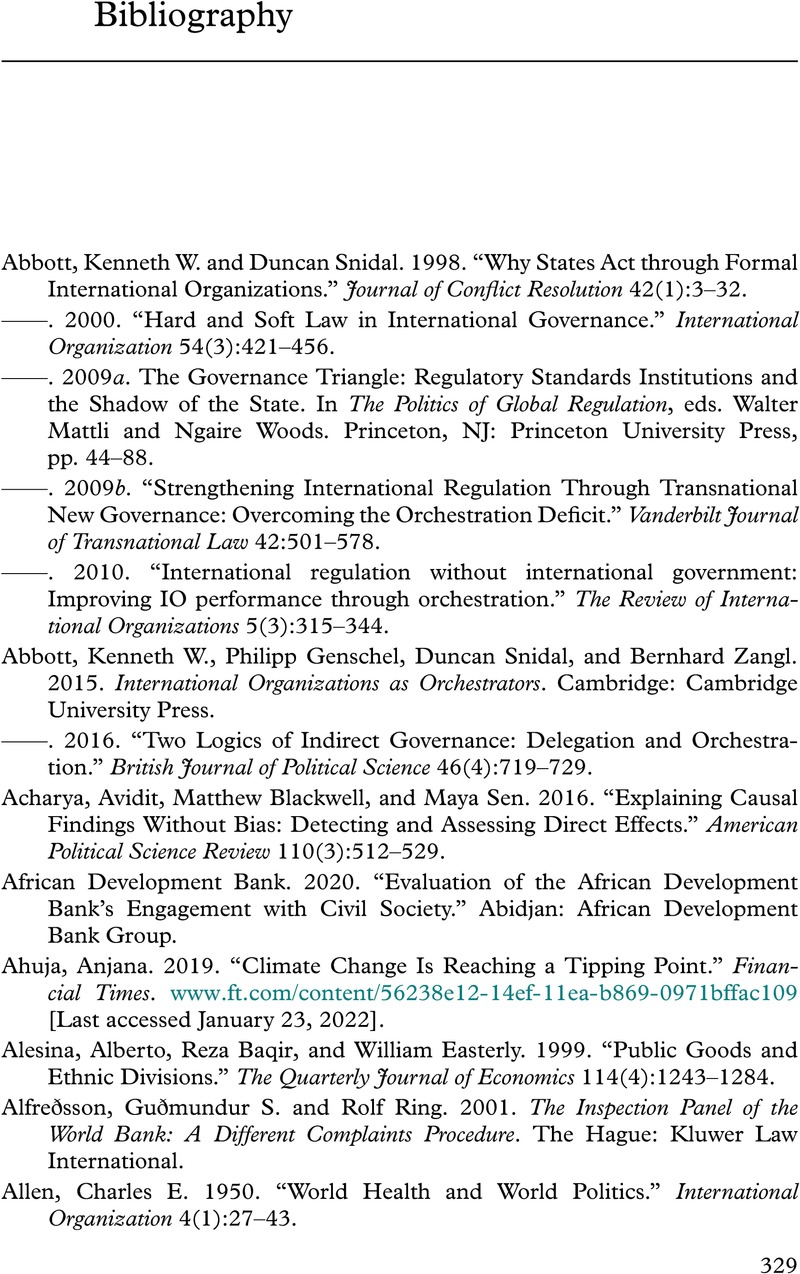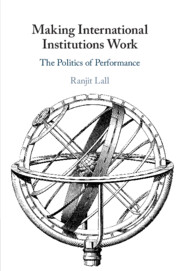Book contents
- Frontmatter
- Dedication
- Contents
- Figures
- Tables
- Acknowledgments
- 1 International Institutions and the Performance Puzzle
- 2 A Theory of Institutional Performance
- 3 Learning from Assessment
- 4 Performing for Scraps
- 5 The Performance of Life
- 6 Effective but Unaccountable?
- 7 The Politics of Performance
- Appendix A Formalizing the Argument
- Appendix B Empirical Details
- Appendix C Interview Methods and List
- Appendix D Survey of International Bureaucrats
- Bibliography
- Index
- References
Bibliography
Published online by Cambridge University Press: 16 February 2023
- Frontmatter
- Dedication
- Contents
- Figures
- Tables
- Acknowledgments
- 1 International Institutions and the Performance Puzzle
- 2 A Theory of Institutional Performance
- 3 Learning from Assessment
- 4 Performing for Scraps
- 5 The Performance of Life
- 6 Effective but Unaccountable?
- 7 The Politics of Performance
- Appendix A Formalizing the Argument
- Appendix B Empirical Details
- Appendix C Interview Methods and List
- Appendix D Survey of International Bureaucrats
- Bibliography
- Index
- References
Summary

- Type
- Chapter
- Information
- Making International Institutions WorkThe Politics of Performance, pp. 329 - 369Publisher: Cambridge University PressPrint publication year: 2023



